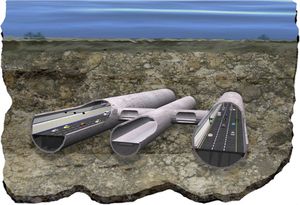VIDEO: $1.6M Dredge of Milton Harbor Expected to Finish This Week
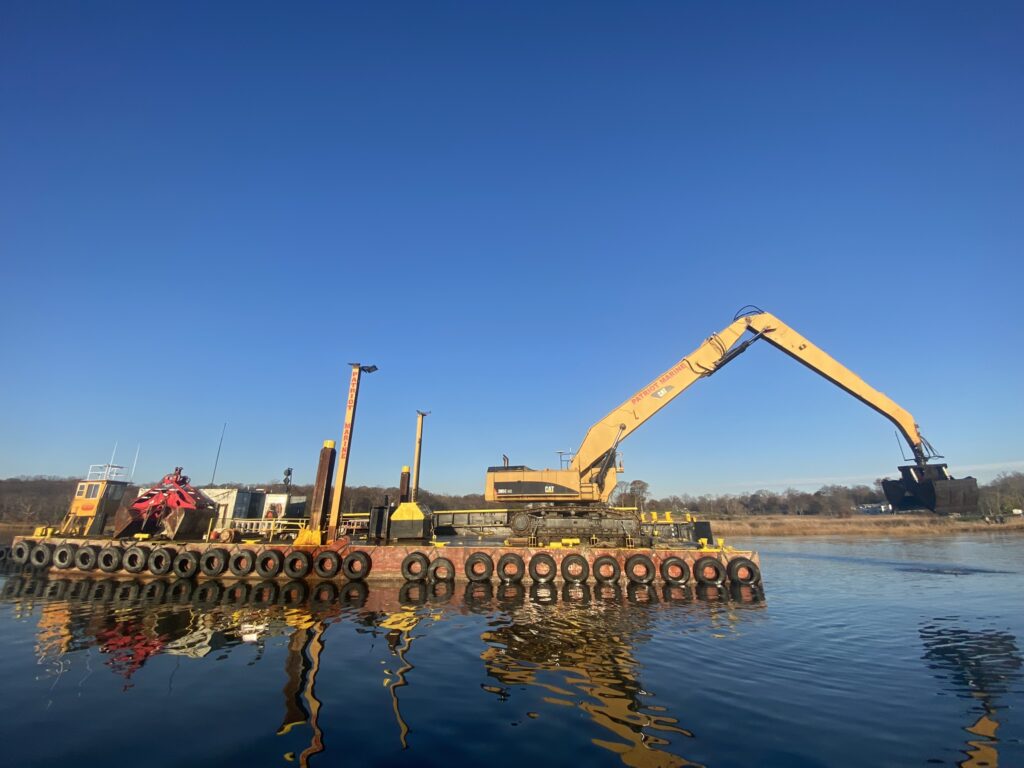
The $1.6 million dredge of the Milton Harbor channel is expected to be completed this coming week, according to City officials. This makes the channel much more navigable and clears the way for the City to request the US Coast Guard reinstall its federal channel buoys. The US Coast Guard removed its nine buoys – federally maintained “ATONs” or aids to navigation – from Milton Harbor earlier this year on Monday, June 6th due to significant shoaling in the area.
Overseen by H&L Contracting, LLC of Hauppauge and conducted by its subsidiary Patriot Marine of New Haven, the dredge will clear the channel five feet deep and seventy five feet wide to allow for safe navigation in and out of the Rye Boat Basin. The dredging of the boat basin is a separate process and will take place in the Fall of 2023.
A 24-Hour, Technology Driven Operation
The dredge is a 24-hour, technology driven operation to remove approximately 21,000 cubic yards of silt from Milton Harbor and tow the material out to an area on Long Island Sound where dumping is allowed by permit from the New England Army Corps, the Connecticut Department of Energy and Environmental Protection and the New York Department of Environmental Conservation.

The operation involves a barge with all the dredging equipment including the crane for removing the silt, a scow that is filled with loads of silt and two tugs–one used in Milton Harbor and a larger tug for towing the scow out to deep water. On an inspection visit Wednesday with Boat Basin Supervisor Rodrigo Paulino, CMM and Chair of the Boat Basin Commission Joe Pecora, the operation was staffed by a crane operator, two operators working on the dredge barge and scow and the operator of the smaller tug. The larger tug had its own crew.
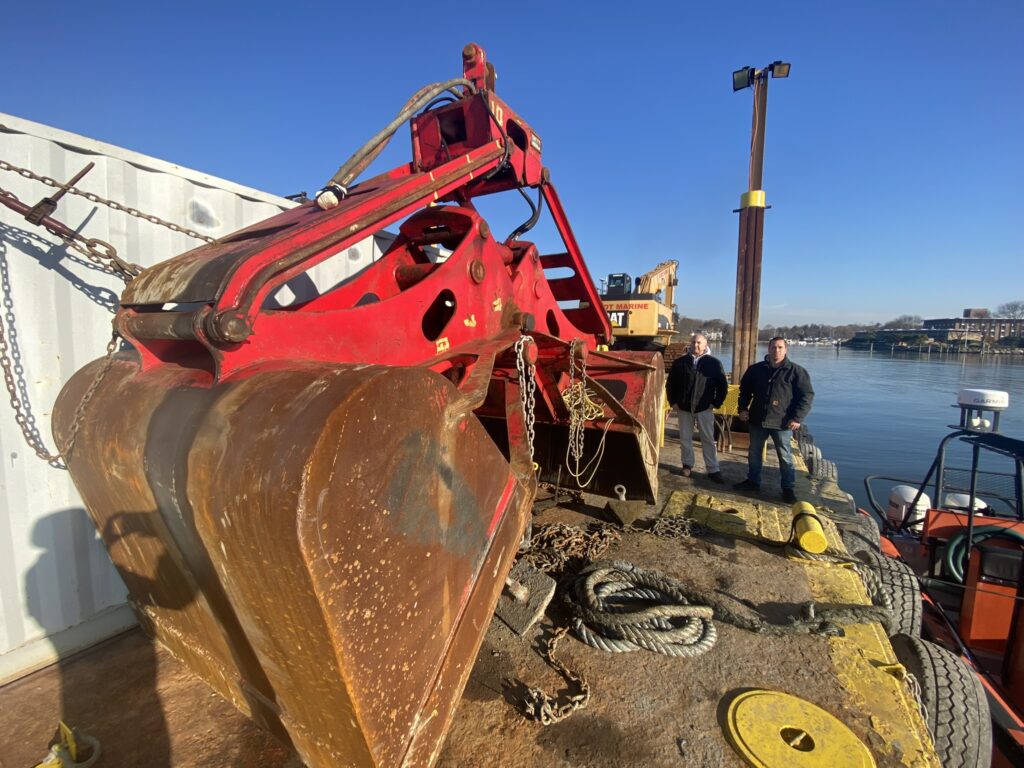
“I am so happy it is finally getting done,” said Pecora. The project began ten years ago when the dredge consultant was hired in 2013, and Pecora has been personally involved in the project since 2016. “I am definitely impressed with the support that I got from [the City Manager] and even the Council.”
“They see we are making improvements and it is a totally different atmosphere as far as getting things done with the dredge,” continued Pecora. “Before it was always problems problems, no solutions, more problems.” as he referred to the frustrations his predecessors at the boat basin commission endured working to advance the dredge.
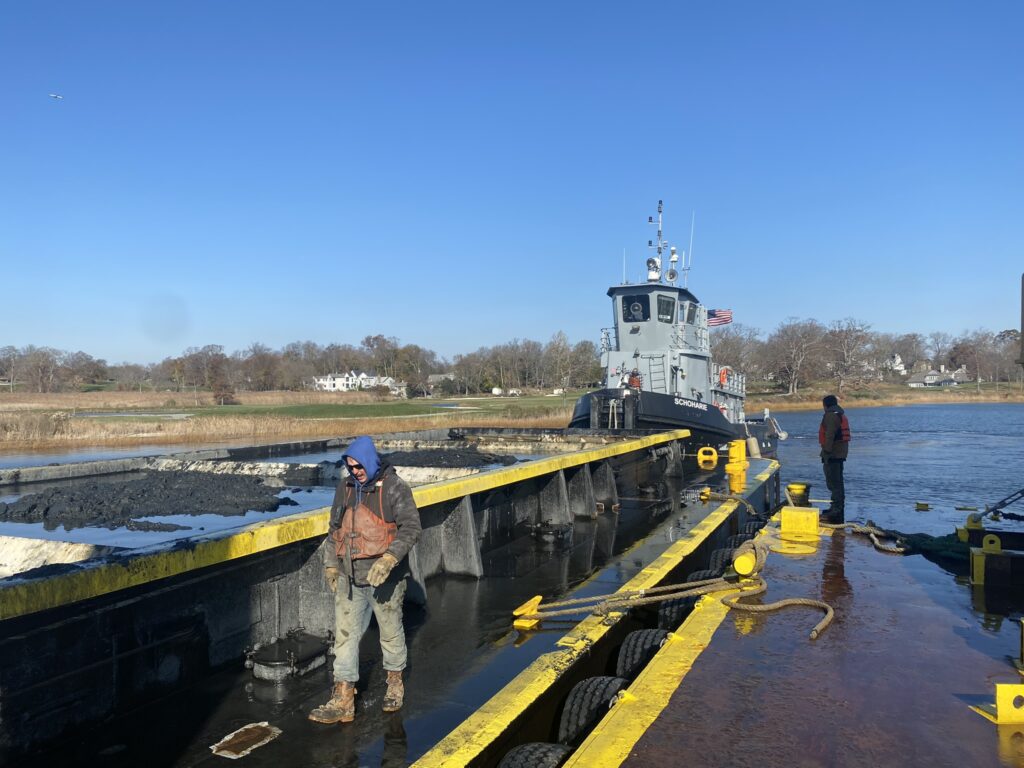
The dredge crew works 24 hours a day, according to the tide schedule. Active dredging runs in the two to three hours before high tide (the high tide is required for dredge operations). At high tide and with the scow full, the larger tug comes into the harbor, attaches to the scow (now full of silt) and runs what is a 2-3 hour round trip to dump the silt and return the scow in time for the next tide cycle. The dredge crew quickly returns to the boat basin and to their New Rochelle hotel to rest before having to return a few hours later before the next tide cycle.
The crew works the tide cycle day and night. The speed of the operation is an alchemy of the size of the scow being used, the size of the bucket (on the crane), the skill and speed of the crane operator and the weather, among other things. Equipment such as the size of the crane bucket or scow depends in part on where in the channel the operation is and the corresponding water depth.
On the inspection visit the crew was welding repairs on one of the two available crane buckets. The barge is stocked with maintenance and repair equipment. Divers are on call to solve problems beyond the immediate reach of the crew such as a prop tangled by debris. A missed day of operations cost Patriot Marine upwards of $40,000/day according to the crew, so a premium is put on keep the job running.
Technology at Work
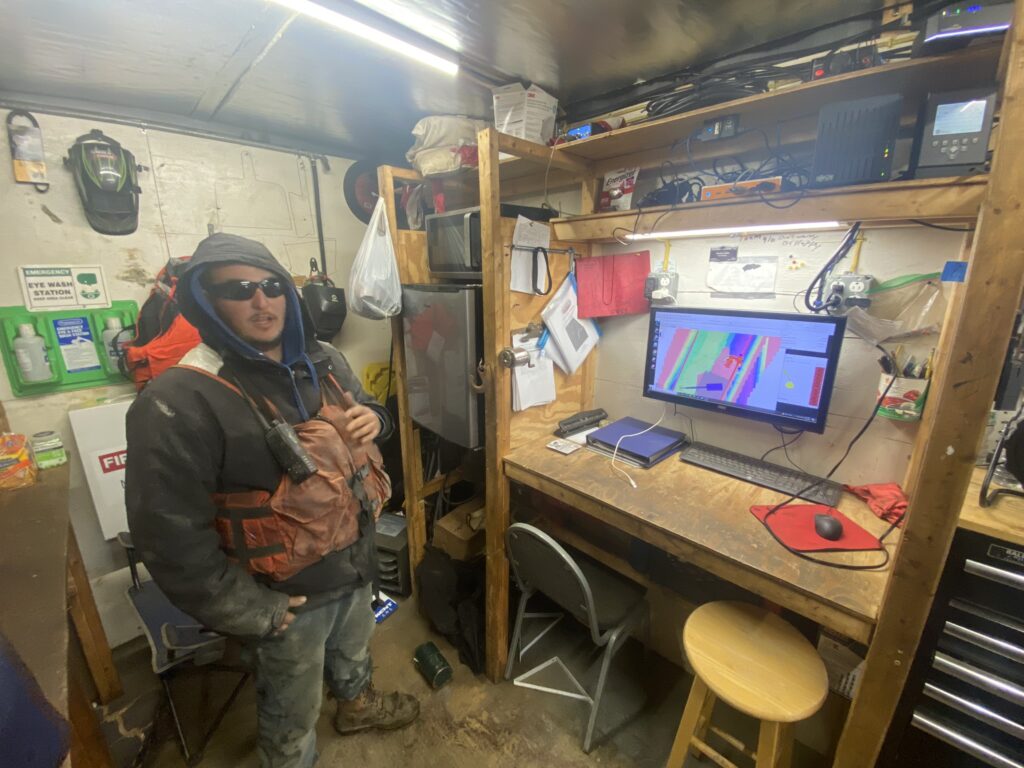
You might think hauling 21,000 cubic yards of muck is a pretty dirty, mechanical and monotonous job and it is. It is also tech heavy with computer software scanning the bottom of the channel in real time and directing the crane operator exactly where to remove the next bucketload of muck until he reaches the five foot water depth target.
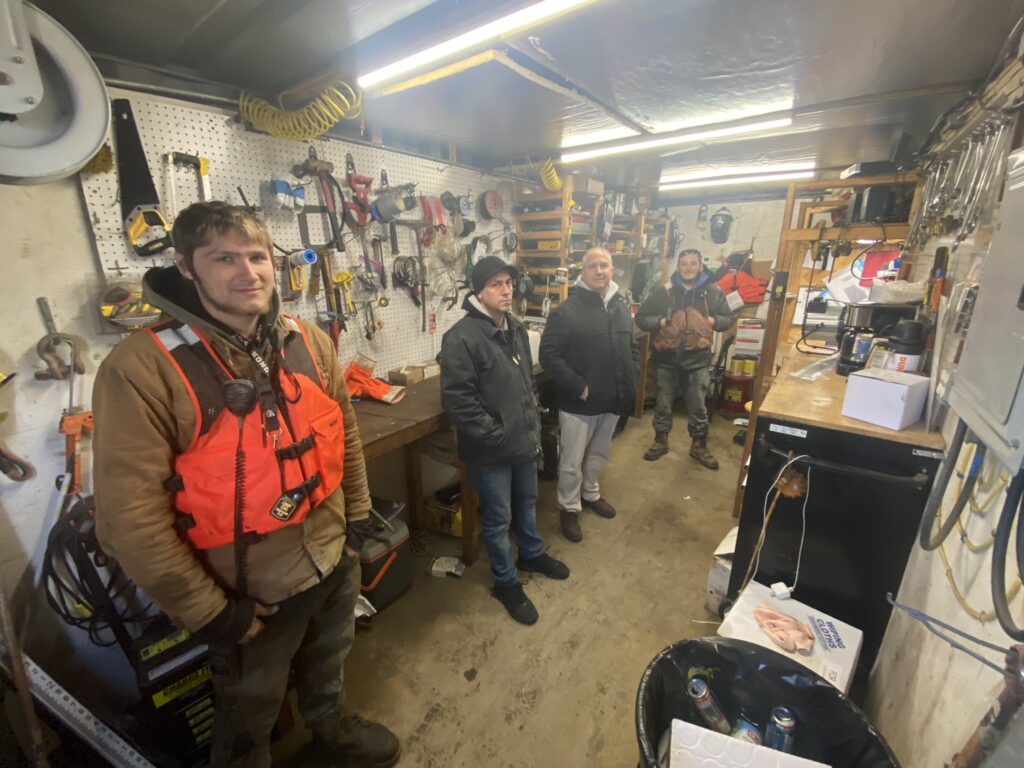
“I didn’t realize how computerized and sophisticated it is,” said Pecora of the Boat Basin Commission. The software runs in the crane cab to guide the operator’s work, inside a makeshift office in a shipping container on the barge for the rest of the crew, and is also transmitted in real time to the dredge consultant and the US Coast Guard.
Anchor Side Hustle?

The goal is to remove silt, but the crane makes other routine finds including large logs, tires and anchors. On Wednesday alone, the dredge crew had pulled up three pyramid anchors during dredge operations.
Next Request Goes to the US Coast Guard
“We were in touch with the Coast Guard this past week to make them aware that the dredge is near completion,” said Rye City Manager Greg Usry. “Once the dredge is complete I expect the Coast Guard will inspect the channel and will make their determination. We have offered to provide our post dredge survey and to assist in any way. We remain hopeful that they will replace their navigational markers.”
The City installed Coast Guard approved private navigational aids earlier this year after the Coast Guard removed its federal buoys. The Coast Guard requires a six foot depth at mean low tide to operate, but has told the City it will consider the post-dredge five foot depth as an exception. If the Coast Guard refuses to reinstall its buoys, the concern is Milton Harbor might loose its federal waterway designation and that may in turn threaten other types of future government funding in and around the waterway.
The channel dredge was completed in the expected time frame and all the contracts for the boat basin dredge in the fall of 2023 are in place.
Watch videos of the dredge:

